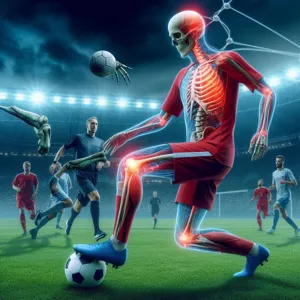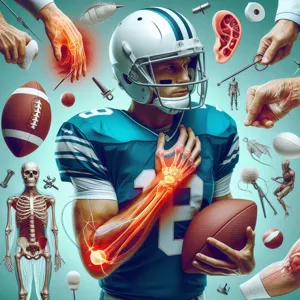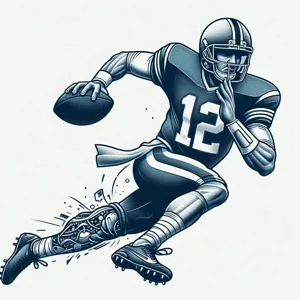Car accidents can be jarring experiences, leaving us feeling overwhelmed and unsure of what to do next.
Whether it’s a minor fender bender or a more serious collision, the moments immediately following an accident are crucial for ensuring safety, protecting your rights, and minimizing stress. In the blink of an eye, you may find yourself grappling with shock, potential injuries, and the chaos of exchanging information with other parties involved. That’s why knowing how to navigate the aftermath is essential. In this comprehensive guide, we’ll walk you through the essential steps to handle a car accident safely and effectively—from the immediate actions you should take at the scene to the necessary follow-up procedures that will safeguard your well-being and legal standing. With a clear plan in place, you can approach this daunting situation with confidence and clarity, allowing you to focus on recovery and moving forward.
1. Understanding the Immediate Aftermath of a Car Accident

In the chaotic moments following a car accident, emotions run high, and the adrenaline can make it difficult to think clearly. Understanding the immediate aftermath is crucial for ensuring your safety, protecting your rights, and facilitating a smoother recovery process.
First and foremost, take a deep breath and assess your surroundings. Check yourself and any passengers for injuries, and if it is safe to do so, move to a secure location away from traffic. If your vehicle is operational and can be safely moved, pull it to the side of the road to avoid further accidents. Your safety and the safety of others should be your priority.
Once you’ve ensured everyone is safe, it’s essential to call emergency services, especially if there are injuries or significant damage to vehicles. Even if the accident seems minor, having a police report can be invaluable for insurance claims and any future legal matters. While waiting for help, begin gathering crucial information. Document the scene with photos, noting the position of the vehicles, road conditions, and any visible damages. Collect contact and insurance information from all parties involved, as well as names and numbers of any witnesses.
Keep your emotions in check during this process. It’s easy to let frustration or anger surface, but remaining calm and composed will help you handle the situation more effectively. Avoid admitting fault or discussing the accident in detail with others at the scene, as this can complicate matters later on.
As you navigate this uncertain and often overwhelming experience, remember that the immediate aftermath of a car accident sets the stage for your recovery. By focusing on safety, documentation, and communication, you can take critical steps toward managing the situation effectively, allowing you to move forward with clarity and confidence.
2. Ensuring Safety First: Checking for Injuries
In the chaotic moments following a car accident, your first instinct may be to assess the damage to your vehicle or to exchange information with the other driver. However, prioritizing safety and checking for injuries should be your immediate focus. The adrenaline rush can mask pain and injuries, making it crucial to be vigilant.
Begin by calmly checking yourself and any passengers for visible injuries. Look for signs of distress, such as difficulty breathing, bleeding, or unconsciousness. If anyone appears to be in severe pain or unable to move, avoid moving them unless there is an immediate danger, such as a fire. Instead, call emergency services right away, providing them with clear information about the accident’s location and the number of people potentially injured.
Once you’ve ensured everyone’s initial safety, turn your attention to the other parties involved in the accident. Approach with caution and empathy, asking if they or their passengers are okay. Keep in mind that emotions may be running high, so it’s important to remain calm and collected.
If it’s safe to do so and you are able, take a moment to assess the broader scene. Ensure that your vehicle and others are positioned safely away from oncoming traffic, if possible. Use hazard lights and road flares to alert other drivers of the incident. The safety of everyone involved is paramount, and a clear assessment of injuries and potential hazards will lay the groundwork for a more effective response.
Remember, regardless of how minor the accident may seem, it’s always wise to seek medical attention. Some injuries – like concussions or whiplash – may not present immediate symptoms. Documenting any medical assessments can also be crucial for insurance claims and legal proceedings later on. By prioritizing safety and checking for injuries right away, you not only protect yourself and others but also establish a responsible approach to handling the aftermath of an accident.
3. Moving to Safety: What to Do with Your Vehicle

After a car accident, your immediate priority should be ensuring the safety of yourself and others involved. If your vehicle is still operable and it’s safe to do so, carefully move it to a secure location away from traffic. This reduces the risk of further collisions and helps keep the roadway clear for emergency responders.
Before moving your vehicle, take a moment to assess the situation. Are you on a busy road or highway? Is there a potential for additional accidents due to other drivers being distracted by the scene? If your car is in a dangerous position, such as in the middle of an intersection or along the edge of a busy street, it’s crucial to shift it to a safer location if possible. Use your hazard lights to alert other drivers of your presence, and, if you have flares or reflective triangles, set those up to create a visible barrier around your vehicle.
If your car is too damaged to move, or if there are injuries involved, stay inside your vehicle with your seatbelt fastened until help arrives. This is often the safest position until emergency services can assess the situation.
While waiting, take the time to document the accident. Use your smartphone to capture photos of the scene, including the position of vehicles, any visible damages, road conditions, and traffic signs. This evidence can be invaluable later when dealing with insurance claims or legal matters.
Remember, remaining calm and composed is key. Your safety and the safety of others is paramount. Once the immediate situation is under control and help is on the way, you can focus on the next steps in navigating the aftermath of the accident.
4. Calling for Help: When and How to Contact Authorities
In the aftermath of a car accident, knowing when and how to contact authorities is crucial for ensuring safety and facilitating the proper handling of the situation. The first step is to assess the severity of the accident. If there are injuries, significant damage, or if the vehicles obstruct traffic, it’s essential to call for help immediately. Dialing emergency services should be your first action, as they can dispatch police, medical assistance, and fire services if needed.
When you call, be prepared to provide essential information: your location, the number of vehicles involved, and any visible injuries. Speak clearly and stay calm; the operator is trained to guide you through the process. If it is safe to do so, move your vehicle to the side of the road to prevent further accidents, but only if it is possible without causing additional harm.
Once authorities arrive, be sure to provide them with accurate details about the accident. This includes your account of what happened, the conditions at the time, and any witness statements if available. It’s also wise to take your own notes and photographs of the scene for your records, as this documentation can be invaluable later on.
In some cases, such as minor accidents with no injuries and where both parties agree on the situation, you may decide to forgo involving the police. However, this can lead to complications, especially if disputes arise later regarding fault or damages. Even in less severe accidents, it’s generally advisable to file a police report, as it provides official documentation that can be crucial for insurance claims.
By knowing when and how to contact the authorities, you can navigate the aftermath of a car accident more effectively, ensuring that you and everyone involved receive the assistance needed to move forward safely.
5. Documenting the Scene: Essential Information to Gather

Documenting the scene of a car accident is a crucial step that can significantly influence the outcome of your insurance claim or any legal proceedings that may follow. In the immediate aftermath of the incident, emotions can run high, making it easy to overlook vital details. However, taking the time to gather essential information can make all the difference.
Begin by ensuring everyone’s safety. Once you’ve confirmed that you and others involved are safe, start documenting the scene. Use your smartphone or a camera to take comprehensive pictures of the accident site from various angles. Capture the positions of all vehicles involved, any visible damages, road conditions, traffic signs, and any relevant landmarks. These images serve as visual evidence that can help clarify the circumstances of the accident.
Next, exchange information with the other driver(s). Collect names, contact details, insurance information, and license plate numbers. It’s also important to note the make, model, and color of the vehicles involved. If there are any witnesses nearby, don’t hesitate to ask for their names and contact information as well; their accounts may provide critical support for your claims.
Additionally, document any visible injuries you or your passengers may have sustained. This may include taking photos of bruises, cuts, or other injuries that could worsen over time. Note the date, time, and location of the accident, and write down a detailed account of what happened while the events are still fresh in your mind. Be sure to include any statements made by the other driver(s) or witnesses, which might be relevant later.
Lastly, consider contacting local law enforcement to file an official report. The police will document the scene and create an accident report, which can serve as an important piece of evidence when dealing with insurance companies. Make sure to request a copy of this report for your records.
By meticulously gathering and documenting this information, you not only protect your interests but also lay the groundwork for an effective response to the incident, ensuring that all details are accounted for when it matters most.
6. The Importance of Witness Statements
When navigating the aftermath of a car accident, one of the most crucial elements often overlooked is the collection of witness statements. These statements can provide invaluable insights into the incident and serve as a critical piece of evidence in determining fault and liability. Witnesses—whether they are bystanders, other drivers, or passengers—can offer objective accounts of the events leading up to, during, and after the accident. Their perspectives can corroborate your version of the story or provide details that may have been missed in the chaos.
Immediately after ensuring everyone’s safety and calling for medical assistance if needed, it’s important to approach witnesses calmly and respectfully. Politely ask for their names, contact information, and a brief account of what they observed. If they are willing, request a more detailed written statement or even a recorded version of their recollection. It’s essential to document their observations accurately, as memories can fade over time.
Witness statements can be particularly powerful if there are conflicting accounts between the parties involved in the accident. Insurance companies typically value unbiased third-party testimonies, which can significantly influence the outcome of claims and legal proceedings. In addition, having solid witness accounts can help expedite the claims process, making it easier for you to receive the compensation you deserve.
Remember to express appreciation to your witnesses for their help. Not only does this foster goodwill, but it also encourages them to remain available if your case requires follow-up or additional statements. Collecting witness statements is an essential step that can make a significant difference in how effectively you navigate the aftermath of a car accident. By taking this proactive approach, you can reinforce your position and ensure that the truth of the incident is accurately represented.
7. Communicating with Other Parties Involved

Communicating with other parties involved in a car accident is a critical step that can significantly influence the outcome of the situation. Once you’ve ensured everyone’s safety and contacted emergency services, it’s time to engage in dialogue with the other driver(s) and any witnesses. Approach this interaction with a calm demeanor and a focus on clarity.
Start by exchanging essential information such as names, contact details, insurance information, and vehicle registration numbers. It’s important to remain polite and non-confrontational, even if emotions are running high. Avoid assigning blame or getting into heated discussions about the accident; instead, focus on gathering facts. Document any statements made by the other party, as these can be valuable later on.
If there are witnesses present, don’t hesitate to ask for their contact information as well. Their accounts might provide crucial insights that can aid in understanding the circumstances surrounding the accident. Additionally, consider using your smartphone to take photos of the scene, including vehicle damage, road conditions, and any relevant traffic signs. These images can serve as vital evidence if disputes arise later.
Always remember to avoid discussing your injuries or the accident’s specifics in detail at the scene. What you say can be misconstrued or used against you later, especially when dealing with insurance claims. Instead, focus on collecting information and ensuring that everyone is safe and accounted for. Clear and respectful communication during this stressful time can pave the way for smoother resolutions and help you navigate the aftermath with greater ease.
8. Dealing with Insurance Companies: What You Need to Know
Dealing with insurance companies can be one of the most daunting aspects of navigating the aftermath of a car accident. Once the dust settles and you’ve ensured that everyone involved is safe, the next step often involves engaging with your insurance provider and possibly the other party’s insurer. Understanding how to communicate effectively and what information you need to provide can significantly affect the outcome of your claim.
Firstly, it’s crucial to gather all pertinent information at the accident scene. This includes the names and contact details of all parties involved, insurance policy numbers, and any witness statements. Take photographs of the accident scene, vehicle damage, and any relevant road conditions. This documentation will serve as essential evidence when you file your claim.
When you contact your insurer, be prepared to provide a detailed account of the accident. Stick to the facts and avoid speculating about fault or assigning blame. Insurance adjusters are trained to assess claims, and any inconsistencies or emotional language can complicate the process. Remember, your goal is to ensure that your version of events is accurately represented.
It’s also wise to familiarize yourself with your policy details before engaging with your insurance company. Understand what coverage you have, including liability, comprehensive, and collision coverage. Knowing your rights and the extent of your coverage can empower you to advocate for yourself effectively.
Be cautious with any communication from the other driver’s insurance company. While they may seem friendly and eager to resolve the matter, their primary goal is to protect their client’s interests, not yours. It’s advisable to consult with a legal professional before discussing the accident with them, especially if there are injuries or significant damages involved.
Lastly, keep detailed records of all communications with insurance representatives, including dates, times, and the names of those you speak with. This can help you stay organized and provide a timeline if disputes arise later on.
Navigating the insurance process after a car accident can be complex, but with the right preparation and knowledge, you can streamline the experience and focus on what truly matters: recovery and moving forward.
9. Understanding Your Rights and Responsibilities
When navigating the aftermath of a car accident, understanding your rights and responsibilities is paramount. The moments immediately following a collision can be chaotic, but being aware of what you are entitled to and what is expected of you can help alleviate some of the stress.
First and foremost, it is critical to know that you have the right to seek medical attention for any injuries sustained during the accident. Whether you feel fine immediately after the incident or not, some injuries may not manifest symptoms until later. Documenting your condition and seeking medical advice will not only ensure your health but also provide essential documentation should you decide to pursue a claim later.
Equally important is your responsibility to report the accident to the appropriate authorities. In many jurisdictions, failing to report an accident that results in injury or significant property damage can lead to legal consequences. Be sure to exchange information with the other party involved, including names, contact details, insurance information, and vehicle details. Taking photographs of the scene, vehicle damage, and any relevant road conditions can also bolster your case later on.
In addition to legal obligations, understanding your rights regarding insurance claims is crucial. This includes the right to file a claim with your insurance company, as well as the other driver’s insurance if they are at fault. It is wise to familiarize yourself with your policy details, including coverage limits and deductibles, so you can navigate the claims process with confidence.
Finally, consider consulting with a legal professional who specializes in automotive accidents. They can provide insight into your rights and help you understand the complexities of the claims process. By being informed and proactive, you can take significant steps toward ensuring that your rights are protected while fulfilling your responsibilities in the wake of a car accident.
10. Seeking Medical Attention: Why It’s Crucial
After a car accident, the adrenaline rush can mask the pain and trauma that your body may have suffered, leading you to believe that you’re perfectly fine. However, seeking medical attention promptly is crucial for several reasons. First and foremost, injuries such as whiplash, concussions, or internal injuries may not present immediate symptoms. A medical professional can perform a thorough examination and identify any hidden issues that could worsen if left untreated.
Additionally, obtaining a medical evaluation creates an official record of your injuries, which can be vital if you decide to file an insurance claim or pursue legal action later on. It demonstrates that you took your health seriously and sought the appropriate care, bolstering your case. Furthermore, medical professionals can provide guidance on the necessary follow-up care, rehabilitation, or therapy that may be required, ensuring your long-term recovery.
Don’t underestimate the emotional toll of an accident either. Many individuals experience anxiety, depression, or post-traumatic stress after such events. Seeking medical attention can also open the door to mental health support, helping you navigate any emotional challenges you might face in the aftermath.
In summary, prioritizing medical attention after a car accident is essential—not just for your physical health, but for your overall well-being and peace of mind. Always err on the side of caution and seek help, even if you feel okay at the moment. Your health and safety should always come first.
11. The Role of Accident Reports in Claims
Accident reports play a critical role in the aftermath of a car accident, serving as a foundational document that can significantly influence the claims process. These reports, typically compiled by law enforcement officials, detail the circumstances surrounding the accident, including the time, location, and the parties involved. They often include witness statements, diagrams of the scene, and critical evidence such as weather conditions and road conditions at the time of the incident.
When it comes to filing an insurance claim, these reports become invaluable. Insurance companies rely heavily on the information contained in the accident report to assess liability and determine the validity of a claim. A well-documented report can provide clarity on who was at fault, which is crucial for ensuring that the responsible party is held accountable and that the affected individuals receive the compensation they deserve.
Additionally, the accident report can serve as a protective measure for all parties involved. If discrepancies arise later—such as conflicting accounts of the accident or changes in the details of the incident—the report stands as an official record. This can help to counteract any attempts by the other party or their insurer to minimize their liability or shift blame.
It’s essential to obtain a copy of the accident report as soon as it’s available and to review it carefully for any inaccuracies. If you find discrepancies, you have the right to contest them with the relevant authorities. Keeping accurate documentation throughout the claims process, including the accident report, is key to navigating the complexities of insurance claims and ensuring a smoother recovery journey following the accident.
12. Evaluating Vehicle Damage and Repair Options
After ensuring that everyone involved in the accident is safe and that necessary medical attention has been sought, the next crucial step is evaluating the damage to your vehicle and exploring repair options. This process can feel daunting, especially in the wake of the accident’s emotional turmoil, but approaching it methodically can help restore a sense of control.
Begin by conducting a thorough visual inspection of your vehicle. Look for obvious signs of damage such as dents, scratches, and broken parts. Pay close attention to the structural integrity of your car—elements like the frame, suspension, and alignment may not be immediately visible but can affect your vehicle’s safety and performance. If your car is drivable, take it to a safe location where you can assess the damage without the stress of traffic.
Once you’ve documented the visible damage, it’s wise to take photographs from multiple angles. These images will serve as essential documentation for insurance claims and potential repair estimates. If you’re unsure about what to look for, consider enlisting the help of a qualified mechanic who can provide a professional evaluation.
Next, it’s time to explore repair options. Contact your insurance company to understand your coverage and the process for filing a claim. They may provide a list of preferred repair shops, but you are entitled to choose where to take your vehicle. Research local repair facilities, read reviews, and inquire about their certifications and warranties on services. Getting multiple estimates can also help you gauge the cost and scope of repairs.
As you weigh your options, consider the long-term implications of the repairs. Ensure that the repair shop uses quality parts and has a solid reputation for their work. It’s important to balance cost with quality; opting for the cheapest option might save you money upfront but could lead to more significant issues down the road.
Lastly, keep communication lines open with your insurance agent and the repair shop as the process unfolds. Staying informed will help ease anxiety and ensure that your vehicle is restored to its pre-accident condition, allowing you to get back on the road with confidence. Remember, the goal is not just to fix the damage but to ensure your safety and the longevity of your vehicle.
13. Navigating Emotional Aftermath: Coping with Trauma
After the shock of a car accident has begun to fade, many individuals find themselves grappling with a wave of emotions that can be just as overwhelming as the physical aftermath. The trauma from a collision can manifest in various ways, including anxiety, anger, confusion, or even feelings of guilt, regardless of who was at fault. It’s essential to acknowledge these emotions and take proactive steps to navigate this complex emotional landscape.
First and foremost, give yourself permission to feel. It’s normal to experience a range of emotions after such an event, and suppressing them can lead to long-term psychological effects. Consider speaking with a professional therapist who specializes in trauma; they can provide valuable coping strategies and a safe space to process what you’ve been through.
Additionally, don’t underestimate the power of a support system. Surround yourself with friends and family who can offer comfort and understanding. Sharing your feelings and experiences with loved ones can help ease the burden and remind you that you are not alone in this journey.
Another effective coping mechanism is journaling. Writing down your thoughts and feelings can serve as an emotional outlet and help clarify your experiences. You might also find solace in mindfulness practices such as meditation or yoga, which can ground you and foster a sense of calm amidst the chaos.
Lastly, allow yourself time to heal. Emotional recovery doesn’t have a set timeline, and it’s important to be patient with yourself as you navigate this process. By taking these steps, you can gradually reclaim a sense of normalcy and peace in your life after the accident. Remember, seeking help is a sign of strength, and taking care of your emotional well-being is just as crucial as addressing any physical injuries.
14. Legal Considerations: When to Consult a Lawyer
After a car accident, navigating the legal landscape can feel daunting, especially if the incident resulted in injuries or significant property damage. Understanding when to consult a lawyer is crucial for ensuring that your rights are protected and that you receive the compensation you deserve.
In general, if the accident involved serious injuries, multiple parties, or disputed liability, seeking legal counsel should be your next step. Insurance companies are skilled negotiators and may try to minimize your claim or deny it altogether. An experienced attorney can help you understand your rights, negotiate with insurers, and represent you in court if necessary. They can also provide invaluable guidance on collecting evidence, documenting damages, and understanding the intricacies of personal injury law.
It’s also wise to consult a lawyer if you’re facing any legal complexities, such as driving without insurance, involvement in a hit-and-run, or if the police report is disputed. These situations can complicate your case significantly, and having a legal expert on your side can help clarify your options and create a strong defense.
Additionally, don’t wait too long to reach out for legal help. Each state has its own statute of limitations for filing claims, which means you may lose your right to compensation if you don’t act quickly. A good rule of thumb is to consult a lawyer as soon as possible after the accident, preferably before engaging in any discussions with insurance representatives.
Ultimately, knowing when to consult a lawyer can make a significant difference in the aftermath of an accident. By securing legal representation, you empower yourself to navigate the complexities of the situation with confidence, ensuring that your interests are prioritized and that you can focus on recovering from the incident.
15. Preventing Future Accidents: Tips for Safe Driving
Preventing future accidents is not just about following the rules of the road; it’s about cultivating a mindset of safety and awareness every time you get behind the wheel. Adopting safe driving habits can significantly reduce the likelihood of accidents and ensure a safer experience for you and everyone else on the road. Here are some essential tips to keep in mind:
1. **Stay Focused**: Distracted driving is one of the leading causes of accidents. Whether it’s texting, fiddling with the radio, or having heated conversations with passengers, it’s vital to keep your attention on the road. Consider using hands-free devices if you need to make a call, and always pull over safely if you need to send a message.
2. **Follow Speed Limits**: Speed limits are set for a reason. Driving too fast reduces your reaction time and increases the severity of any potential accidents. Always adjust your speed according to road conditions—be it rain, snow, or heavy traffic—and remember that slower speeds can improve your ability to react to unforeseen circumstances.
3. **Use Turn Signals**: Communicating your intentions to other drivers is crucial for road safety. Always use your turn signals when changing lanes or turning. This not only helps prevent collisions but also fosters a culture of awareness and predictability among drivers.
4. **Maintain a Safe Following Distance**: The general rule of thumb is to maintain at least a three-second gap between your vehicle and the one in front of you. This distance gives you ample time to react in case of sudden stops. In adverse weather conditions, increase that distance to ensure you have even more time to respond.
5. **Be Aware of Your Surroundings**: Regularly scan your surroundings and be alert to pedestrians, cyclists, and other vehicles. This vigilance allows you to anticipate what others might do and take pre-emptive action to avoid accidents.
6. **Avoid Impaired Driving**: Never get behind the wheel if you’ve consumed alcohol, drugs, or even certain medications that can impair your ability to drive. Use alternative transportation options like rideshares, taxis, or public transit if you’re not fit to drive.
7. **Conduct Regular Vehicle Maintenance**: Ensure your vehicle is in good working order by keeping up with regular maintenance. Check tire pressure, brakes, lights, and fluid levels to avoid mechanical failures that could lead to accidents.
By integrating these safe driving practices into your routine, you not only protect yourself but also contribute to the well-being of all road users. Remember, every journey is an opportunity to prioritize safety, and a little mindfulness can go a long way in preventing future accidents. Stay alert, stay safe, and keep the roads clear for everyone to enjoy.
In conclusion, navigating the aftermath of a car accident can be overwhelming, but with the right knowledge and preparation, you can handle the situation safely and effectively. By following the essential steps outlined in this article—such as ensuring safety, gathering information, contacting authorities, and documenting the scene—you can protect yourself and your interests. Remember, staying calm and composed is crucial during such stressful moments. With these strategies in your toolkit, you can confidently address the challenges that arise after an accident, ensuring that you are well-equipped to move forward. Stay safe on the road, and may you always drive with caution and care.




























